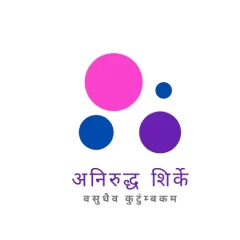Drug addiction in youth globally has been an epidemic, having an impact on individuals, families, and the whole community. It affects both men and women with this problem. Drug addiction in youth has become difficult because of different kinds of drugs, underlying causes of addiction, control strategies, the importance of recovery homes, recovery drives, and awareness programs. To achieve a drug free India, it is important that all stakeholders take active participation.

Table of Contents
Types of Drug Addiction among Youth in India
- Alcoholism: Youth alcoholism is widespread throughout the nation. The social approval of consuming alcohol and cultural acceptance of the substance have led to its pervasiveness among populations. But too much of anything becomes a vice if not taken under control, and it will become the mother of all bad.
- Prescription Drug Abuse: This means taking prescribed drugs improperly or taking someone else’s prescribed drugs, frequently getting them without a valid doctor’s order.
- Tobacco Addiction: In India, tobacco addiction, smoking, and chewing or consuming tobacco products have become major problems for the youth. Wide accessibility and inexpensive pricing for tobacco goods have driven up the rate of dependency.
- Illicit Drug Use: In India, youth are getting more invested in drug abuse, such as cannabis, heroin, cocaine, or synthetic drugs. These drugs have bad Health and Social effects.
Factors contributing to Drug Addiction in Youth
- Social pressure: It has an important role to play in starting drug use among them. Because of pressure from peers and society, these kids might use drugs to match their expectations or to be accepted.
- Stress and Mental Health Issues: Young people often have different pressures in terms of stress management and mental health issues like domestic duties, cultural expectations, or gender based violence. They may resort to drugs for relief.
- Accessibility: Factors such as the easy availability of alcohol, tobacco, and prescription drugs contribute to addictions. Over The Counter (OTC) drugs aren’t regulated strongly enough. Unfortunately, liquor is loosely controlled, with no enforced age restriction for sale.
- Lack of Awareness: Some young people simply aren’t aware of the dangers of substance dependency or how to seek help and support. Also read Enhancing Healthcare in Bhutan.
Government of India’s Control Measures for Drug Addiction in Youth
- Policy Framework: The government of India needs to frame a drug de-addiction policy. It will deal with alcohol and drug addiction issues among the young, involving prevention, cure, and reintegration measures.
- Funding Allocation: Drug addiction, prevention and treatment initiatives must be sufficiently financed.
- Research and Data Collection: To adapt to evolving addiction dynamics, continuous research and data collection are key to understanding these changes and crafting interventions accordingly.
- Rehabilitation Facilities: The government should establish comprehensive services such as state of art rehabilitation centers all over India for the youth affected by addiction.
- Controlled Sales: Government must regulate the sale of tobacco and alcohol. The emphasis must be on age verification and legitimate vendors. Close monitoring of pharmacies must prevent the sale of prescription drugs over the counter without supporting documents.
- Border Control: The action need to be taken across international borders to prevent illegally narcotics import to the country.
- Strict Laws and Enforcement: The government must impose strict legal measures on drug consumption, production, distribution, storage, and trafficking. Penalties ought to have been severe to prevent perpetrators.
- Awareness Campaigns: We need public awareness programs to inform youths of the dangers of drugs and where to seek support. These campaigns need to cover urban and rural both areas.
- School Based Education: Schools must have substance use prevention education in the curriculum to teach kids at a young age the dangers of these things.
Drug Free India through collective efforts
- Society Participation: Community leaders, youth groups, and society organisations ought to take part in awareness creation campaigns and rehabilitation endeavours.
- Media Engagement: Media plays an important part in alerting the public at large about the drug problem among youth and for a drug free India.
- International Cooperation: India should work with neighbouring countries and international organisations to combat illicit drug trafficking and transnational drug smuggling.
- Empowerment and Support: Educating youth, providing opportunities for education and employment, and fostering community support can drastically decrease youngsters’ exposure to drugs.
- Primary Healthcare: Integration of de-addiction programs with the primary healthcare system will facilitate accessibility and early intervention.
- Collaboration with NGOs: Partnering with NGOs can extend the scope of de-addiction programs as well as adopt a holistic strategy.
Drug addiction in youth needs immediate attention. We need to talk about all sorts of addictions, discover the causes behind them, and devise a holistic strategy including robust legislation, education, rehab clinics, and awareness initiatives. All stakeholders governments, civil society, and the public must come together to make India free from drugs and contribute towards the proper upbringing and welfare of a better world for our youths. Together, we can address this problem and ensure youth live happy, drug-free life.
